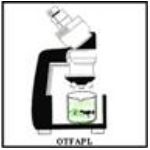AGLS 6502 Lecture 9 - Wildlife Pests
Textbooks
Anderson (1991) Chapter 22 - Animal Damage
- When is Wildlife Overabundant?
- Attitudes towards Animal Damage
- Causes of Animal Damage
- Animal Damage Programmes
- Documentation of Loss
- Animal Damage
- Agricultural Loss
- Other Losses
- Choice of Control
- Forms of Management
- Habitat Alteration
- Population Management
- Trapping & Removal
- Use of Chemicals
- Exclosures
- Biological Control
- Husbandry
- Cultural
- Noise Makers
- Causes of Managing Animal - Damage Problems
- Birds & Aircraft
- Rats & Coconuts
- Vampire Bats & Cattle
- Cocrico and Vegetable Gardens
- Green Monkeys and Food Crop Production
9.3 Zoo and Wildlife Management - Managing Overabundant Species: Human wildlife conflict mitigation
Basis of conflicts
Human induced changes on the landscape imply a reduction in habitats for wildlife and increase the opportunity for conflict between humans and other species.
Concerns
- Zoonoses
- Crop damage/garden depredation
- Dangerous species
Special Cases
- Island ecosystems:
- Ecological saturation, resiliency and human disturbance.
Types of Overabundance
Natural species irruption:
- R-selected species (e.g. coloniser species) Species response to extraordinary environmental event
Human induced irruption:
- Land use transformations
- Artificial feeding
Perceived over-abundance:
- Species within normal population limits, but human perception suggests over abundance.
Management considerations
Species identification:
Which species?
Biology of the Species:
R-selected?
K-selected?back to top
